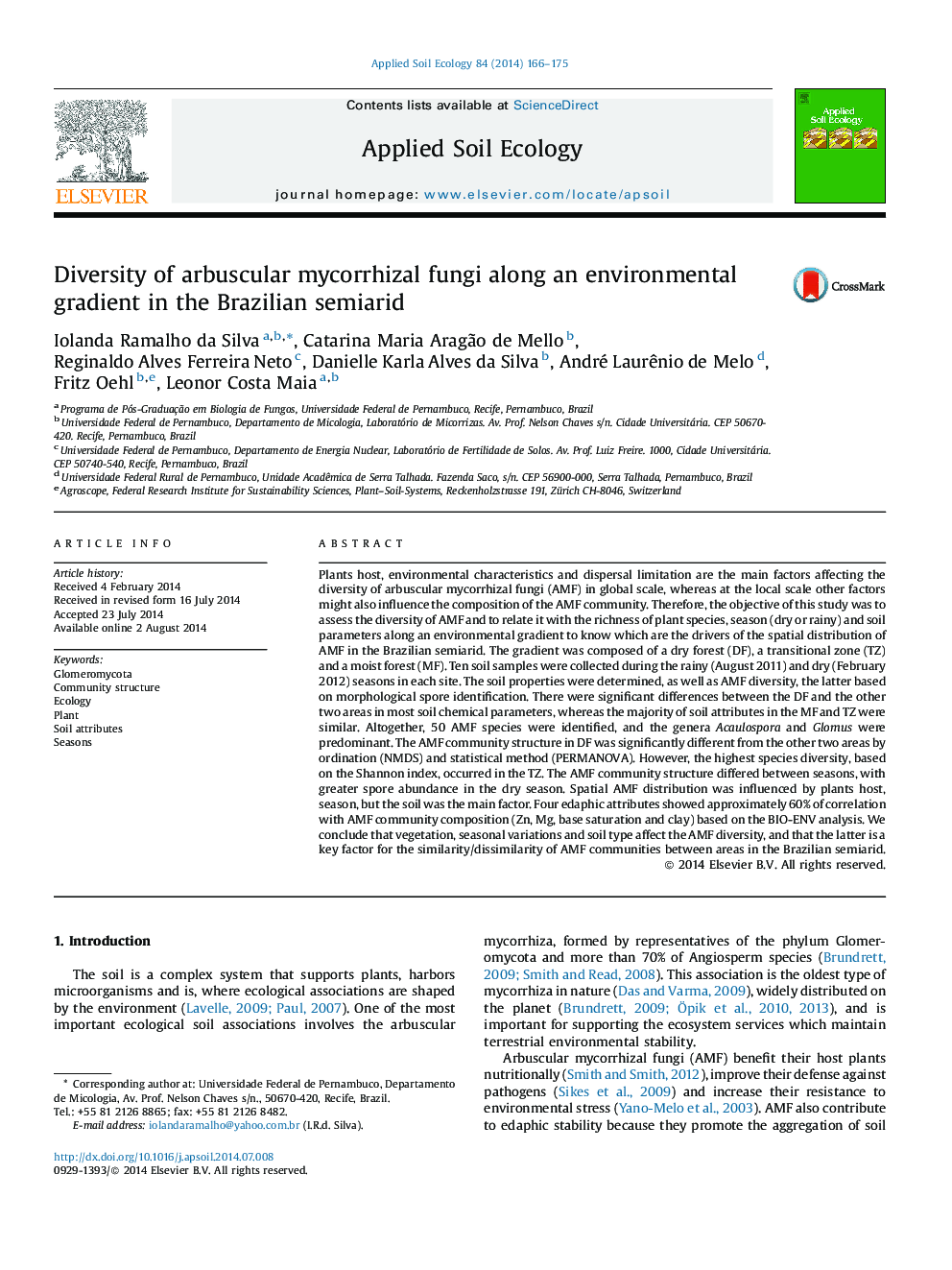| Article ID | Journal | Published Year | Pages | File Type |
|---|---|---|---|---|
| 4382178 | Applied Soil Ecology | 2014 | 10 Pages |
Abstract
Plants host, environmental characteristics and dispersal limitation are the main factors affecting the diversity of arbuscular mycorrhizal fungi (AMF) in global scale, whereas at the local scale other factors might also influence the composition of the AMF community. Therefore, the objective of this study was to assess the diversity of AMF and to relate it with the richness of plant species, season (dry or rainy) and soil parameters along an environmental gradient to know which are the drivers of the spatial distribution of AMF in the Brazilian semiarid. The gradient was composed of a dry forest (DF), a transitional zone (TZ) and a moist forest (MF). Ten soil samples were collected during the rainy (August 2011) and dry (February 2012) seasons in each site. The soil properties were determined, as well as AMF diversity, the latter based on morphological spore identification. There were significant differences between the DF and the other two areas in most soil chemical parameters, whereas the majority of soil attributes in the MF and TZ were similar. Altogether, 50 AMF species were identified, and the genera Acaulospora and Glomus were predominant. The AMF community structure in DF was significantly different from the other two areas by ordination (NMDS) and statistical method (PERMANOVA). However, the highest species diversity, based on the Shannon index, occurred in the TZ. The AMF community structure differed between seasons, with greater spore abundance in the dry season. Spatial AMF distribution was influenced by plants host, season, but the soil was the main factor. Four edaphic attributes showed approximately 60% of correlation with AMF community composition (Zn, Mg, base saturation and clay) based on the BIO-ENV analysis. We conclude that vegetation, seasonal variations and soil type affect the AMF diversity, and that the latter is a key factor for the similarity/dissimilarity of AMF communities between areas in the Brazilian semiarid.
Related Topics
Life Sciences
Agricultural and Biological Sciences
Ecology, Evolution, Behavior and Systematics
Authors
Iolanda Ramalho da Silva, Catarina Maria Aragão de Mello, Reginaldo Alves Ferreira Neto, Danielle Karla Alves da Silva, André Laurênio de Melo, Fritz Oehl, Leonor Costa Maia,
